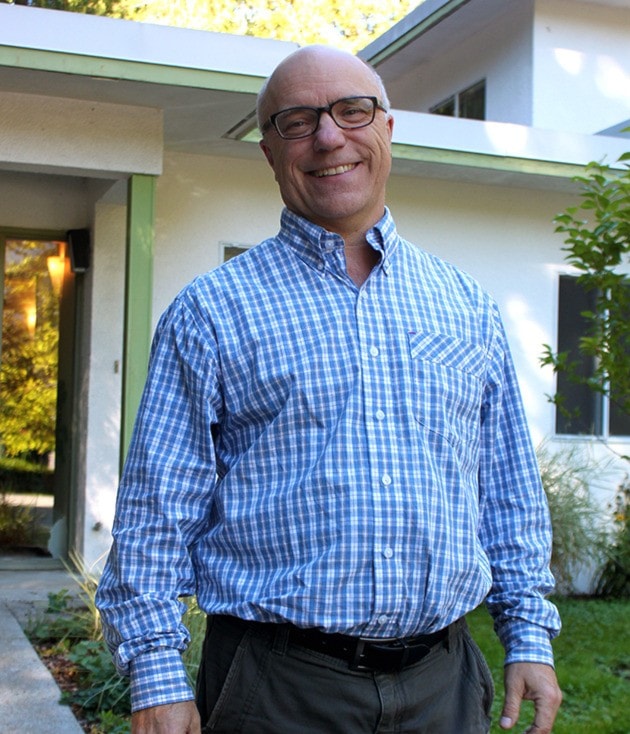The Kalein Hospice Society has abandoned its dream of a free-standing hospice building. Instead, the group will develop a palliative day hospice program at its building in Rosemont. The program will start in early 2017 and will begin at one day per week.
The vision of a facility with hospice beds has been central to Kalein’s vision since the organization began six years ago, and the purchase of a building (pictured below, photo by Will Johnson) four years ago was seen as a furtherance of that plan.
But it would be too expensive.
“There is no Interior Health Authority funding to cover any of those costs,” says Kalein executive director Kim Bater.
“We would have to find other funding to renovate and build and to operate.”
That could involve millions of dollars, he said, and he added that this decision was a difficult change of mindset for the organization.
“When you have a strong vision, it is hard to put it aside,” Bater said. “It was a challenge.”
Bater said Kalein will collaborate in its plan for the palliative care day program with the Nelson and District Hospice Society, which provides palliative care in patients’ homes, in care homes, and in the hospital, using trained volunteers.
The new direction stems from a feasibility report completed this year by consultant Anni Holtby. It examined what hospice care models would work for Nelson and what Kalein’s role might be. The report is attached below.
Bater describes what will happen at the palliative day program:
“People would arrive, they may be brought by friends or family, and they would spend five hours here. First there would be a check-in, like a peer support group: what’s the week been like, what is coming up for you, what is on your plate.
“Then we might have a guest speaker, and we might have a community kitchen piece where they do some cooking, potentially to take meals home.
“We might have a community health nurse doing health education, we might have complementary care like palliative massage or acupuncture or art therapy.”
Bater said part of the goal is deal with social isolation and help people “make meaning as they go through their journey. Also enjoying life, and connecting with each others to do that.”
each others to do that.”
He said it would not all be group oriented, and that there would also be opportunities for solitude, or for one-on-one time with a counsellor or massage therapist.
To abandon the idea of a free standing hospice and to open a palliative day program were two of seven recommendations in Holtby’s feasibly report.
The others involve collaborating with other groups, conducting research, advancing discourse, advocating for more access to palliative care, and maintaining a client-centred approach across the board.
Bater said the recommendations are based on four emerging trends in palliative care.
• Upstream palliative approach. People should be engaged as early as possible after their diagnosis .
• Integrated team approach. Multiple services are often “patchwork and siloed” leading to confusion and lack of patient trust.
• Patient-centred care, as opposed to the more common medical system centred care.
• Relationship-centred care, to reduce professional distance and encourage care providers to see the patient as a person and not a set of symptoms.
Holtby’s report and a presentation Bater made to Nelson city council on September 19 are attached below.
